Filter by

The Rasputin Effect: When Commensals and Symbionts Become Parasitic
This volume focuses on those instances when benign and even beneficial relationships between microbes and their hosts opportunistically change and become detrimental toward the host. It examines the triggering events which can factor into these changes, such as reduction in the host’s capacity for mounting an effective defensive response due to nutritional deprivation, coinfections and seemi…
- Edition
- 1
- ISBN/ISSN
- 978-3-319-28170-4
- Collation
- XII, 357, 12 b/w illustrations, 15 illustrations in colour
- Series Title
- Advances in Environmental Microbiology
- Call Number
- -
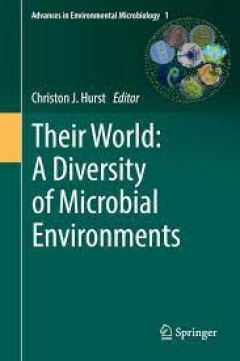
Their World: A Diversity of Microbial Environments
This volume summarizes recent advances in environmental microbiology by providing fascinating insights into the diversity of microbial life that exists on our planet. The first two chapters present theoretical perspectives that help to consolidate our understanding of evolution as an adaptive process by which the niche and habitat of each species develop in a manner that interconnects individua…
- Edition
- -
- ISBN/ISSN
- 978-3-319-28071-4
- Collation
- -
- Series Title
- -
- Call Number
- -
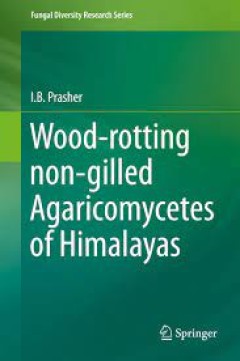
Wood-rotting non-gilled Agaricomycetes of Himalayas
The present volume by the author is based on the outcome of extensive explorations in the Himalayas for more than a decade. It incorporates the original research findings along with that based on literature survey. It is intended to provide a comprehensive account of an important group of fungi which has a direct bearing on wood industry and forest ecosystem besides commercial application in bi…
- Edition
- -
- ISBN/ISSN
- 978-94-017-9858-7
- Collation
- -
- Series Title
- -
- Call Number
- -
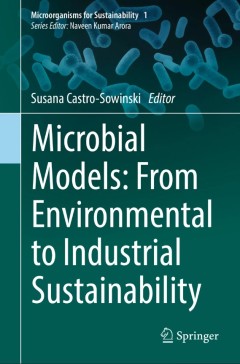
Microbial Models: From Environmental to Industrial Sustainability
This book describes selected microbial genera from the perspective of their environmentally and commercially sustainable use. By focusing on their physiology and metabolism and combining historical information with the latest developments, it presents a multidisciplinary portrait of microbial sustainability. The chapters provide readers descriptions of each genus in the form of microbial model…
- Edition
- 1
- ISBN/ISSN
- -
- Collation
- -
- Series Title
- -
- Call Number
- -
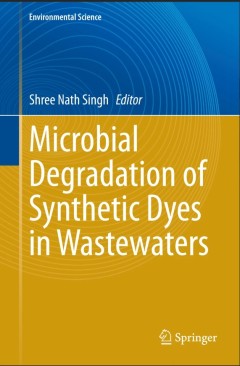
Microbial Degradation of Synthetic Dyes in Wastewaters
Today synthetic dyes are used extensively in the textile dyeing, paper printing, color photography, pharmaceuticals, food and drink, cosmetic and leather industries. As of now, over 100,000 different dyes are available, with an annual production of over 700,000 metric tons. These industries discharge an enormous amount of colored effluents into natural water bodies, with or without treatment. T…
- Edition
- 1
- ISBN/ISSN
- 978-3-319-10941-1
- Collation
- XIV, 367
- Series Title
- Environmental Science and Engineering
- Call Number
- -
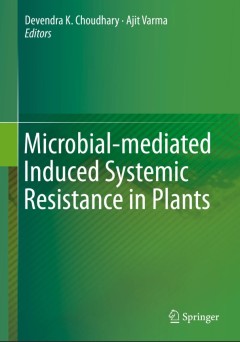
Microbial-mediated Induced Systemic Resistance in Plants
With a focus on food safety, this book highlights the importance of microbes in sustainable agriculture. Plants, sessile organisms that are considered as primary producers in the ecosystem and communicate with above- and below-ground communities that consist of microbes, insects, and other vertebrate and invertebrate animals, are subjected to various kinds of stress. Broadly speaking, these can…
- Edition
- 1
- ISBN/ISSN
- 978-981-10-0387-5
- Collation
- X, 226
- Series Title
- -
- Call Number
- -
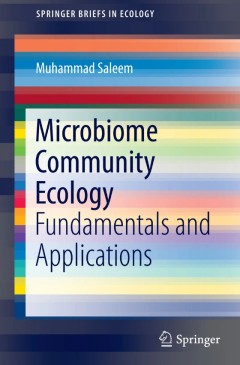
Microbiome Community Ecology
This book reviews the mechanisms, patterns, and processes that regulate prokaryotic diversity through different habitats in the context of evolutionary and ecological hypotheses, principles, and theories. Despite the tremendous role of prokaryotic diversity in the function of the global ecosystem, it remains understudied in comparison to the rest of biological diversity. In this book, the autho…
- Edition
- 1
- ISBN/ISSN
- 978-3-319-11664-8
- Collation
- VIII, 152
- Series Title
- SpringerBriefs in Ecology
- Call Number
- -
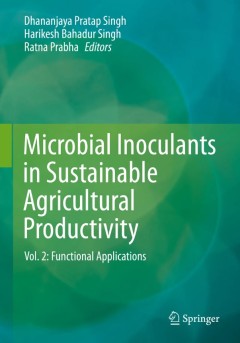
Microbial Inoculants in Sustainable Agricultural Productivity
The performance of crops in the soil largely depends on the physico-chemical components of the soil, which regulate the availability of nutrients as well as abiotic and biotic stresses. Microbes are the integral component of any agricultural soil, playing a vital role in regulating the bioavailability of nutrients, the tolerance to abiotic and biotic stresses and management of seed-borneand soi…
- Edition
- 1
- ISBN/ISSN
- 978-81-322-2642-0
- Collation
- XVI, 308
- Series Title
- -
- Call Number
- -

Microbial Inoculants in Sustainable Agricultural Productivity
The performance of crops in the soil largely depends on the physico-chemical components of the soil, which regulate the availability of nutrients as well as abiotic and biotic stresses. Microbes are the integral component of any agricultural soil, playing a vital role in regulating the bioavailability of nutrients, the tolerance to abiotic and biotic stresses and management of seed-borneand soi…
- Edition
- -
- ISBN/ISSN
- 978-81-322-2642-0
- Collation
- Number of Pages XVI, 308
- Series Title
- -
- Call Number
- -

Microbial Inoculants in Sustainable Agricultural Productivity
How to achieve sustainable agricultural production without compromising environmental quality, agro-ecosystem function and biodiversity is a serious consideration in current agricultural practices. Farming systems’ growing dependency on chemical inputs (fertilizers, pesticides, nutrients etc.) poses serious threats with regard to crop productivity, soil fertility, the nutritional value of far…
- Edition
- 1
- ISBN/ISSN
- 978-81-322-2645-1
- Collation
- XVIII, 343
- Series Title
- -
- Call Number
- -
 Computer Science, Information & General Works
Computer Science, Information & General Works  Philosophy & Psychology
Philosophy & Psychology  Religion
Religion  Social Sciences
Social Sciences  Language
Language  Pure Science
Pure Science  Applied Sciences
Applied Sciences  Art & Recreation
Art & Recreation  Literature
Literature  History & Geography
History & Geography